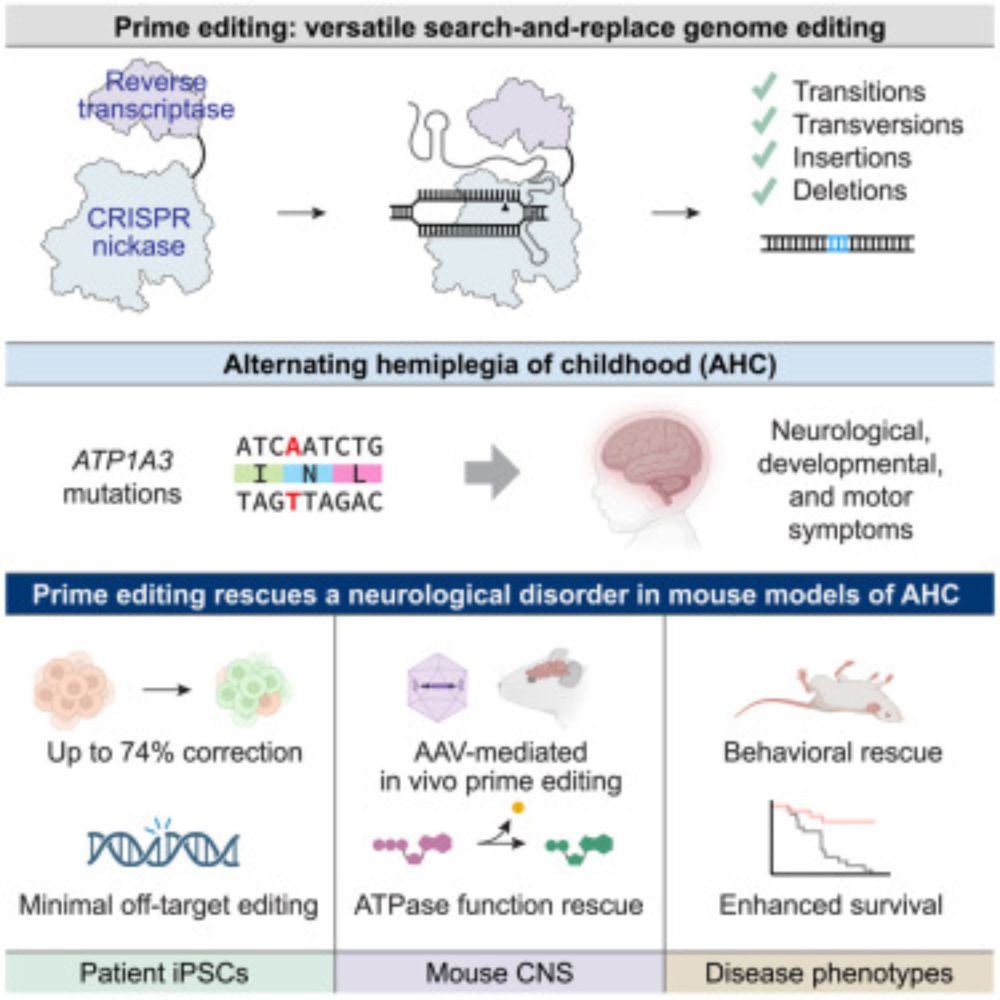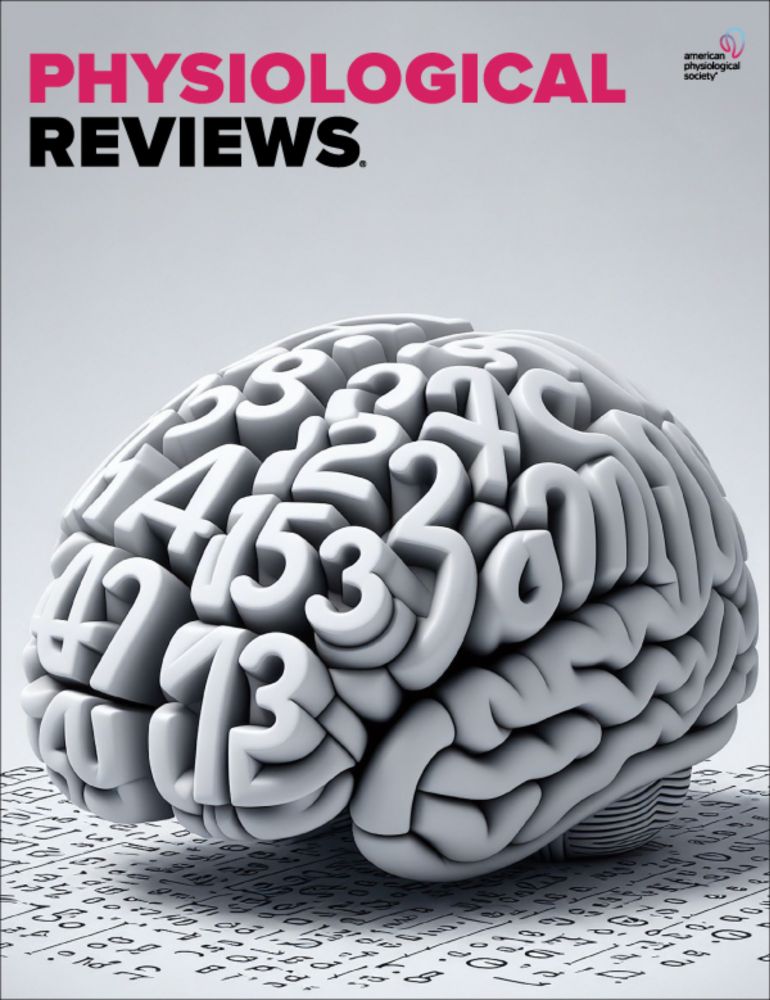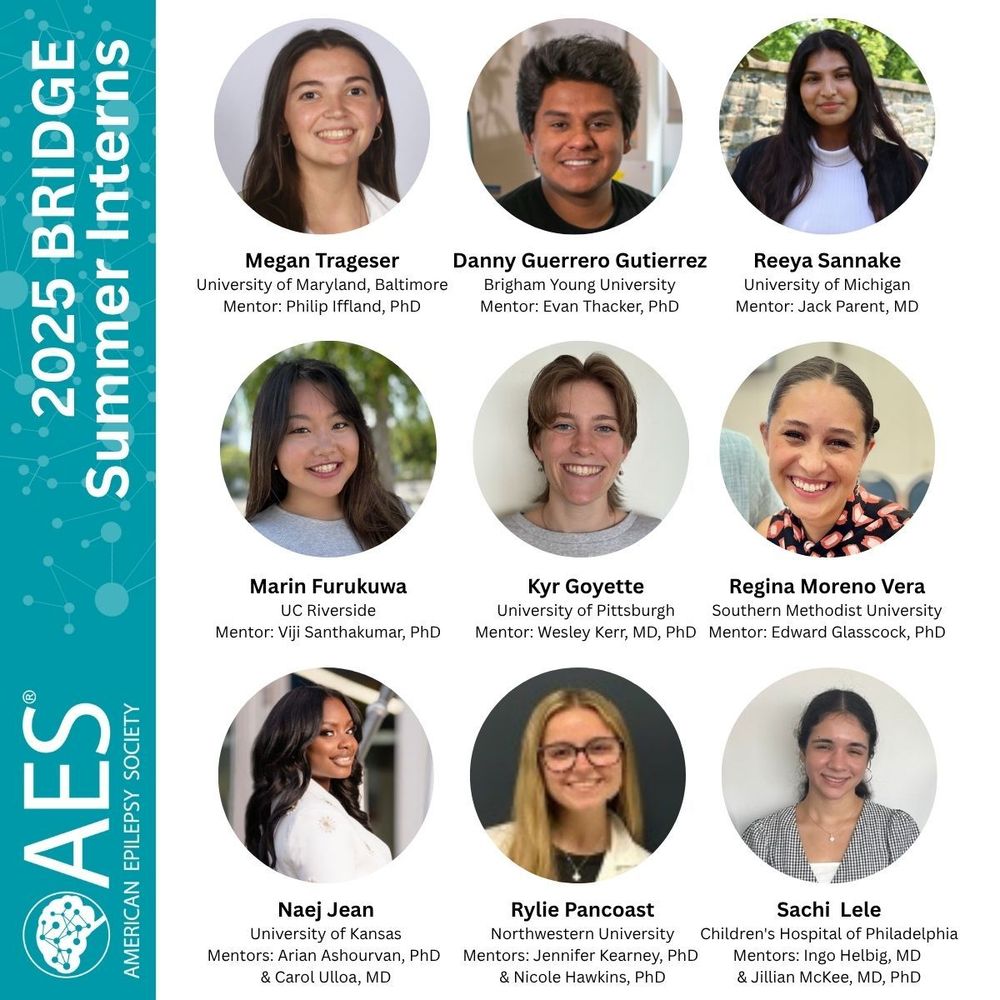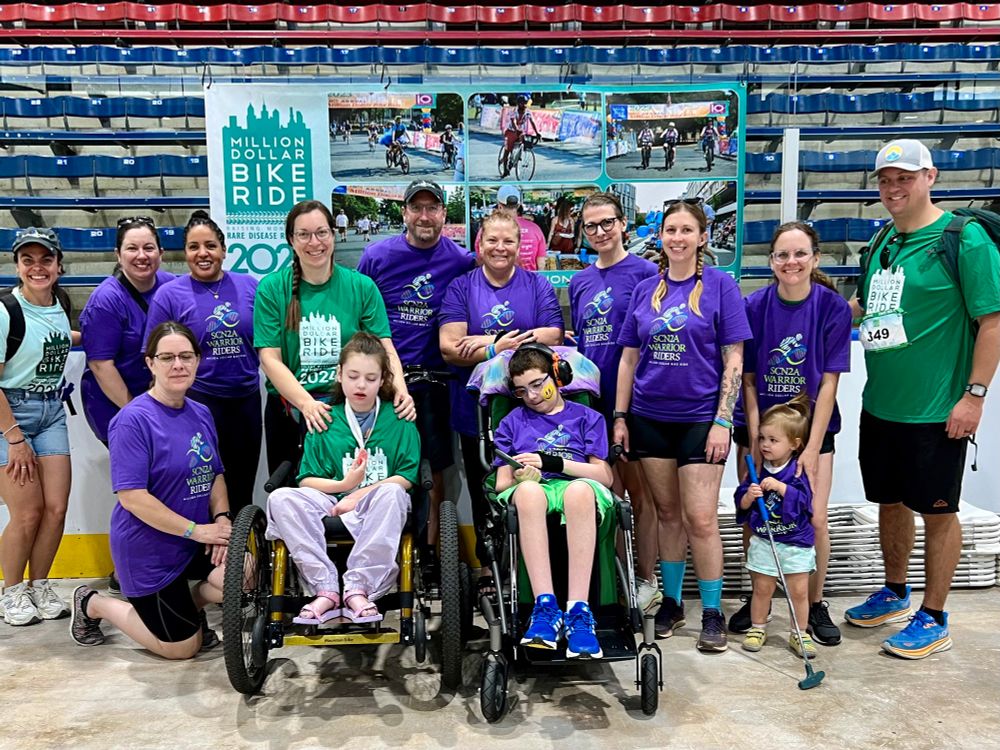KearneyLab
@kearneylab.bsky.social
490 followers
430 following
34 posts
Neuroscience | Genetics | Pharmacology | Epilepsy | Neurodevelopmental Disorders | Targeted therapeutics | Northwestern University, Chicago | Opinions are my own 🧪👩🔬🧠🧬💊
Posts
Media
Videos
Starter Packs
Reposted by KearneyLab
Eric Topol
@erictopol.bsky.social
· Jul 21

In vivo prime editing rescues alternating hemiplegia of childhood in mice
Prime editing and base editing in mouse models and human cells effectively correct
mutations in a gene that causes a childhood neurodevelopmental disorder called alternating
hemiplegia of childhood. I...
www.cell.com
KearneyLab
@kearneylab.bsky.social
· Jun 16
Reposted by KearneyLab
KearneyLab
@kearneylab.bsky.social
· Feb 20
KearneyLab
@kearneylab.bsky.social
· Dec 26

Preclinical Evidence for a Drug–Drug Interaction Between Cannabinol and Melatonin
The worldwide legalization of medicinal cannabis has led to an increased use of products made by commercial operators. These products often contain minor cannabinoids such as cannabinol (CBN) which a...
doi.org
KearneyLab
@kearneylab.bsky.social
· Dec 21

A high seizure burden increases brain concentrations of specialized pro-resolving mediators in the Scn1a+/- mouse model of Dravet syndrome
Dravet syndrome is a severe, intractable epilepsy in which 80 % of patients have a de novo mutation in the gene SCN1A. We recently reported that a hig…
www.sciencedirect.com
KearneyLab
@kearneylab.bsky.social
· Dec 10
KearneyLab
@kearneylab.bsky.social
· Dec 10
KearneyLab
@kearneylab.bsky.social
· Dec 6
KearneyLab
@kearneylab.bsky.social
· Dec 4
KearneyLab
@kearneylab.bsky.social
· Nov 27

Novel mouse model of alternating hemiplegia of childhood exhibits prominent motor and seizure phenotypes
Pathogenic variants in ATP1A3 encoding the neuronal Na/K-ATPase cause a spectrum of neurodevelopmental disorders including alternating hemiplegia of c…
www.sciencedirect.com
KearneyLab
@kearneylab.bsky.social
· Nov 26
Elisa Granato
@prokaryota.bsky.social
· Nov 26

PhD Tips – Dealing with “failed” experiments - Elisa Granato
PhD Tips - Dealing with "failed" experiments "PhD Tips" is a series of articles aimed at graduate students at the University of Oxford (Department of Biology). I wrote this in April 2021. [This articl...
elisagranato.com
Reposted by KearneyLab
Reposted by KearneyLab
KearneyLab
@kearneylab.bsky.social
· Nov 21
Reposted by KearneyLab
Hilary Martin
@hilarycmartin.bsky.social
· Nov 20
Reposted by KearneyLab
Kevin Bender
@neurobender.bsky.social
· Nov 19

Axon Initial Segment Structure and Function in Health and Disease | Physiological Reviews
At the simplest level, neurons are structured to integrate synaptic input and perform computational transforms on that input, converting it into an action potential (AP) code. This process-converting synaptic input into AP output-typically occurs in a specialized region of axon termed the axon initial segment (AIS). The AIS, as its name implies, is often contained to the first section of axon abutted to the soma and is home to a dizzying array of ion channels, attendant scaffolding proteins, intracellular organelles, extracellular proteins, and, in some cases, synapses. The AIS serves multiple roles as the final arbiter for determining if inputs are sufficient to evoke APs, as a gatekeeper that physically separates the somatodendritic domain from the axon proper, and as a regulator of overall neuronal excitability, dynamically tuning its size to best suit the needs of parent neurons. These complex roles have received considerable attention from experimentalists and theoreticians alike. Here, we review recent advances in our understanding of the AIS and its role in neuronal integration and polarity in health and disease.
doi.org
Reposted by KearneyLab
Reposted by KearneyLab









